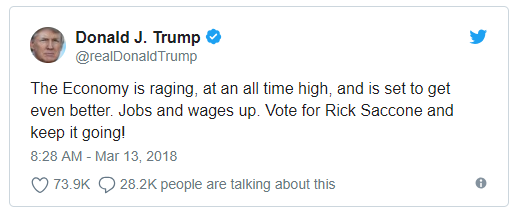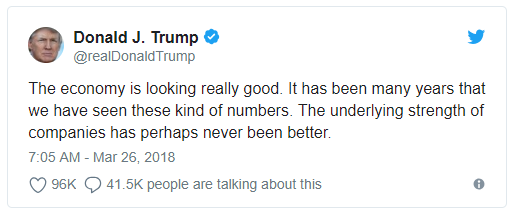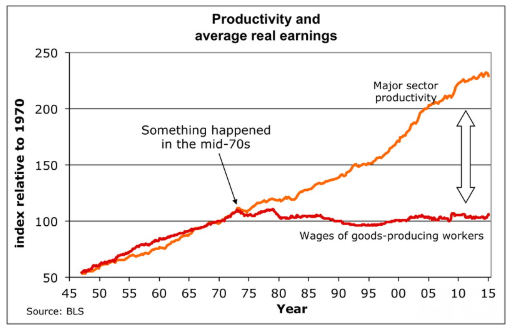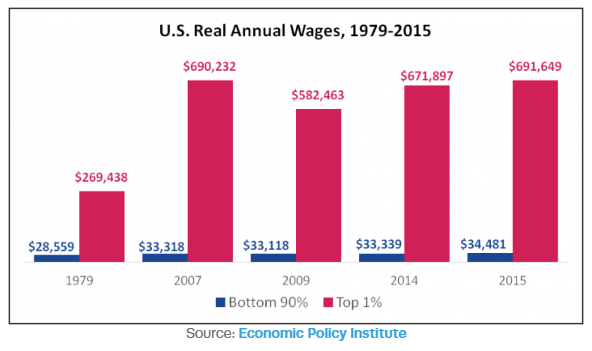Chip in Now to Stand Up for Working People
Working people need a voice more than ever and Working America is making that happen.
Working people need a voice more than ever and Working America is making that happen.
08/27/2018
President Trump loves to brag about how well the economy is supposedly doing, firing off tweets like these:


Despite Trump’s claim that we haven’t seen “these kind of numbers [sic]” in years, jobs and wage growth have been consistent with what we experienced under President Barack Obama.
Setting aside the argument that Trump is merely presiding over the same economy as his predecessor, is it true that our economy is booming?
Trump frequently conflates the economy and the stock market. Make no mistake — the stock market is not the economy.
Sure, the stock market matters. But there’s a whole lot more to our economy than just share prices. For one thing, 80 percent of the value of the stock market is owned by roughly 10 percent of the population, and half of Americans own no stock at all. As it stands, a surging stock market isn’t a path to widespread prosperity.
Trump or his supporters might argue that alongside stock market gains, employers have been adding jobs and unemployment is quite low. With such a tight labor market, things must be good for working people, right?
Unfortunately, stock market growth and the low unemployment rate mask a sobering reality — working people in this country effectively haven’t gotten a raise since the 1970s.

The chart above shows worker productivity along with average real earnings, meaning wages adjusted for inflation.
This chart shows that even with surging productivity, wages have stagnated for decades.
Put another way, according to a Pew Research Center report: “In real terms average hourly earnings peaked more than 45 years ago: The $4.03-an-hour rate recorded in January 1973 had the same purchasing power that $23.68 would today.”
If wages have stagnated for decades, who’s accruing the benefits of our economic growth?
The chart below suggests an answer. It’s another look at wages, showing the difference in real annual wages between the top 1 percent and the bottom 90 percent of the income distribution.

The difference between the top 1 percent and the bottom 90 percent is staggering. To the extent that our economy is growing, that growth overwhelmingly benefits those who are already the wealthiest among us.
As the Organisation for Economic Co-operation and Development put it, there’s a “growing dissatisfaction by many about the nature, if not the strength, of the recovery. While jobs are finally back, only some fortunate few at the top are also enjoying improvements in earnings and job quality.”
It’s clear that there’s a massive disconnect between some of these economic indicators and the experience of working people. Working America members feel this disconnect in their daily lives.
A 60-year-old resident of Galloway, Ohio, said, “My husband and I are working harder than we ever have. We just want to retire — but they want us to work to death.” She is working a retail job for $9 an hour to pay their health care costs.
When asked what her most important issue was, another voter said, “I just want to pay my bills.”
We use cookies and other tracking technologies on our website. Examples of uses are to enable to improve your browsing experience on our website and show you content that is relevant to you.